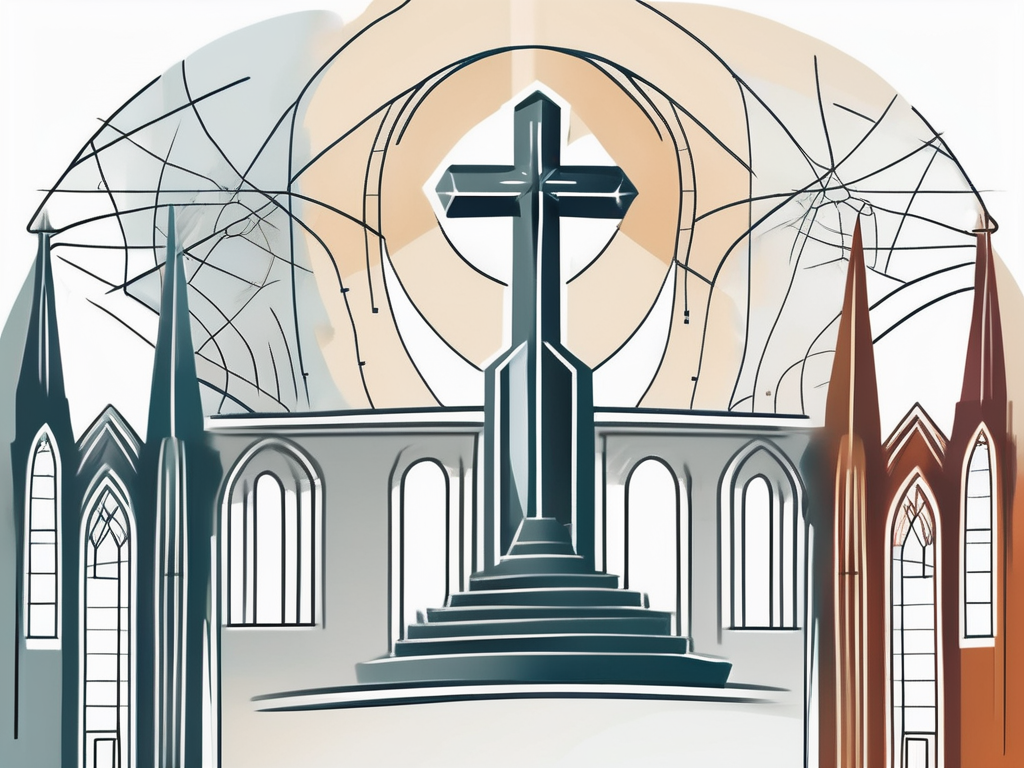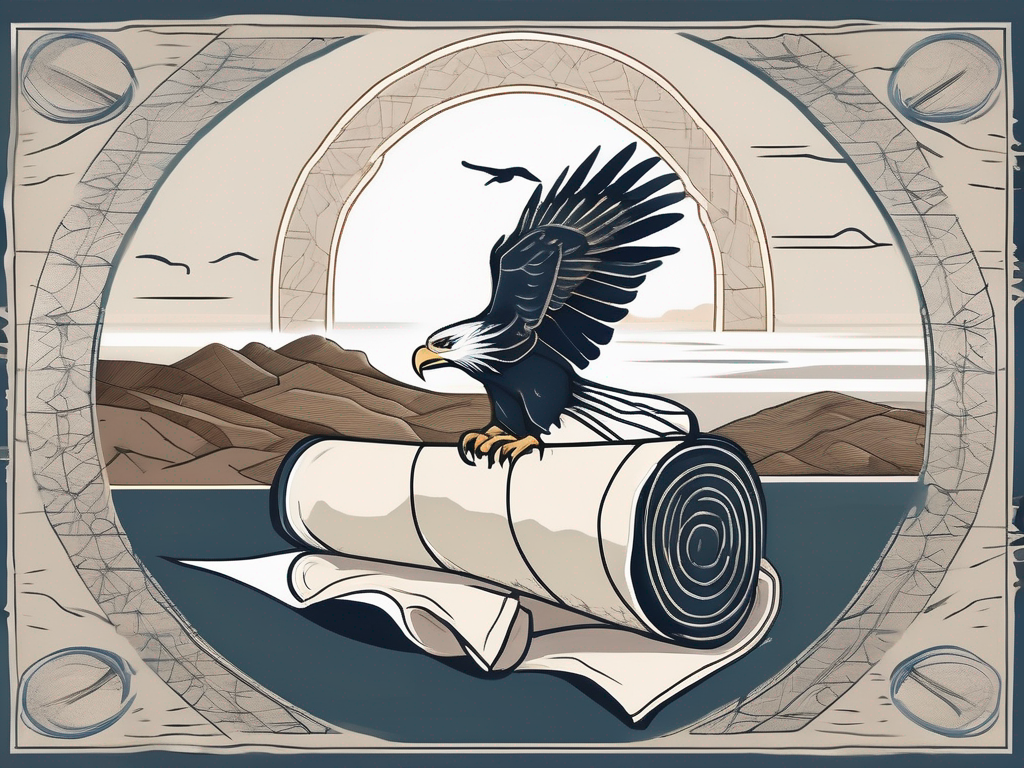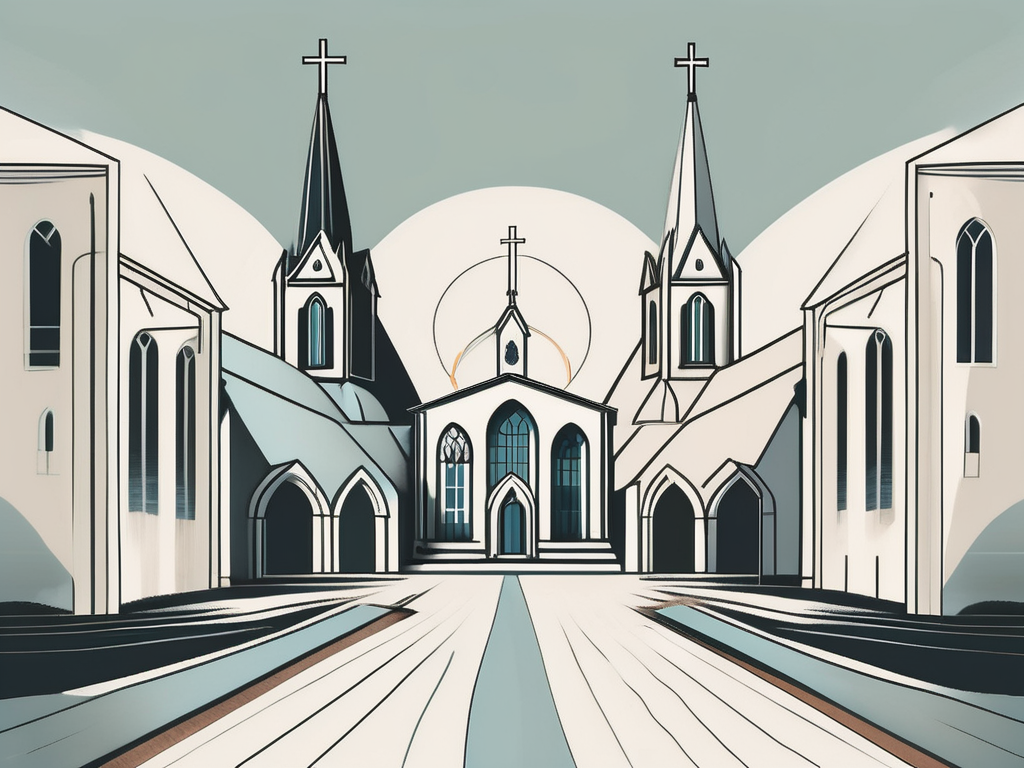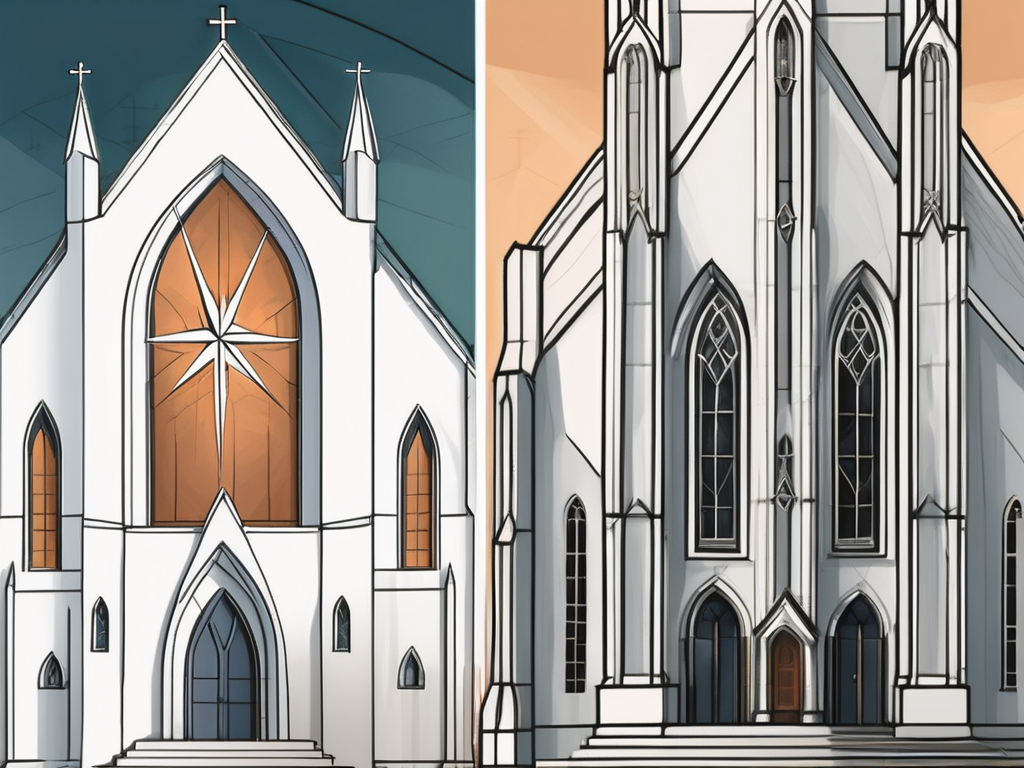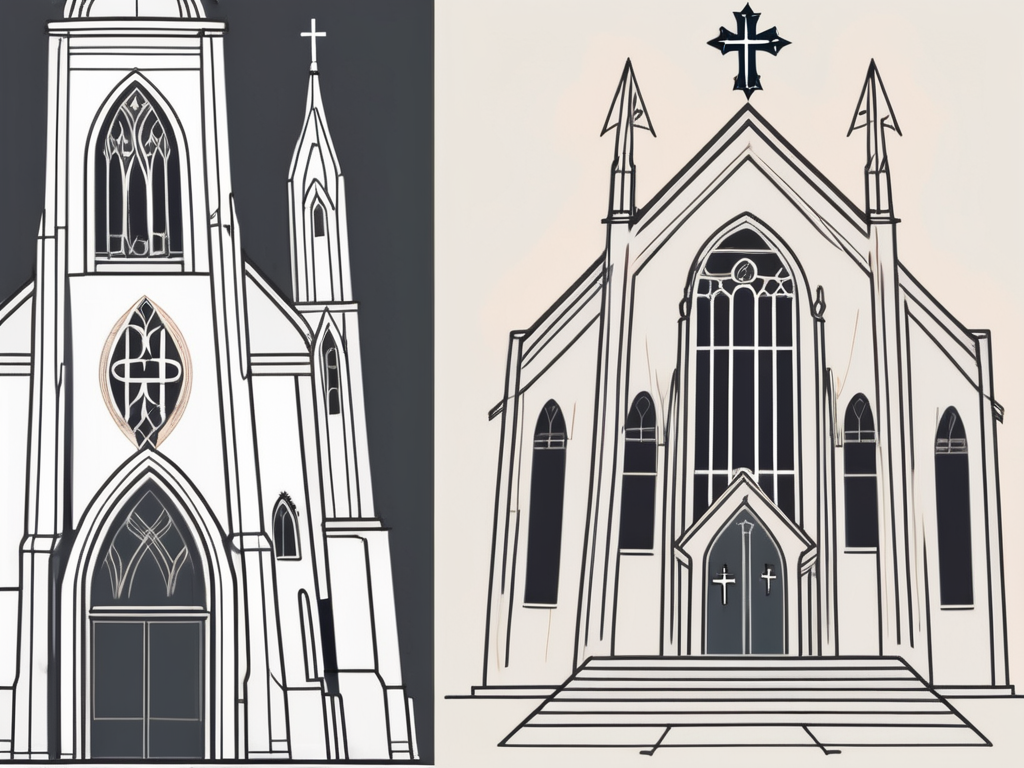Welcome to this comprehensive guide on understanding United Methodist beliefs. Whether you are a lifelong Methodist or simply curious about this branch of Christianity, this article will provide you with valuable insights. Let’s delve into the origins, core beliefs, church structure, worship practices, and social principles of the United Methodist Church.
The Origins of United Methodist Beliefs
Before we explore the core tenets of the United Methodist Church, it’s important to understand its historical roots. Methodist beliefs trace back to the 18th century when a spiritual awakening, known as the Great Awakening, swept across England and America.
This movement was catalyzed by John Wesley, an Anglican priest who had a profound encounter with God. Inspired by his encounter, Wesley sought to revitalize the Church of England by engaging in social justice works and promoting personal piety.
John Wesley’s journey towards the formation of the Methodist movement was not an easy one. He faced opposition and criticism from within the Church of England, but he remained steadfast in his belief that a personal relationship with God and a life of holiness were essential to the Christian faith.
The Birth of Methodism
Methodism, as a distinct movement, emerged when John Wesley and his brother Charles began organizing societies for spiritual growth and worship outside of the established church. These societies soon became known as Methodist societies.
These societies provided a space for individuals to come together, study the Bible, and support one another in their spiritual journeys. They emphasized the importance of personal piety, accountability, and social action.
Methodism gained momentum when Wesley’s enthusiastic preaching drew large crowds and ignited the hearts of many seeking a deeper relationship with God. Through his impassioned sermons and emphasis on faith, Wesley brought a sense of fervor and holiness to the Christian faith.
As the Methodist movement grew, Wesley recognized the need for a structured organization to oversee the societies and provide pastoral care. He ordained preachers and established a system of itinerant ministers who traveled from place to place, spreading the message of salvation.
The Formation of United Methodist Church
In 1784, the Methodist Episcopal Church was officially founded in the United States under the leadership of Francis Asbury and Thomas Coke. This marked the beginning of Methodist expansion across the Atlantic, eventually leading to the formation of the United Methodist Church as we know it today.
The Methodist Episcopal Church played a significant role in shaping American society during the 19th century. Methodists were at the forefront of social reform movements, advocating for the abolition of slavery, women’s rights, and temperance.
Throughout the years, the Methodist Church underwent various mergers and reorganizations. In 1939, the Methodist Episcopal Church, the Methodist Episcopal Church South, and the Methodist Protestant Church merged to form the Methodist Church. This merger aimed to unite the different branches of Methodism and strengthen their collective mission.
However, the journey towards unity did not end there. In 1968, the Methodist Church joined forces with the Evangelical United Brethren Church to create the United Methodist Church. This historic merger brought together two denominations with a shared mission to spread Christ’s love and engage in acts of mercy.
Today, the United Methodist Church continues to be a vibrant and diverse community of believers, committed to making disciples of Jesus Christ for the transformation of the world. Its rich history and Wesleyan heritage serve as a foundation for its beliefs and practices, inspiring individuals to live out their faith in love and service to others.
Core Beliefs of United Methodism
At the heart of United Methodist beliefs, you will find a commitment to the essential doctrines of the Christian faith. These beliefs shape the way Methodists live out their faith in the world.
United Methodists hold a deep reverence for the Trinity, affirming the doctrine that teaches that God exists as one God in three persons: Father, Son, and Holy Spirit. This understanding of the Trinity reflects the complex and mysterious nature of God, who is both unified and diverse in His being.
Additionally, United Methodists firmly believe in the divinity of Jesus Christ. They recognize Him as the Son of God and the Savior of humanity. This belief in Christ’s divinity is not merely a theological concept but a foundational truth that informs their understanding of salvation and the grace of God.
The Methodist understanding of salvation is rooted in the belief that individuals are not saved by their own efforts or good works, but rather through God’s undeserved love and mercy. This emphasis on salvation by grace through faith highlights the belief that salvation is a gift freely given by God, which cannot be earned or achieved through human merit.
Methodists also emphasize the transformative power of God’s grace. They believe that God’s grace is not only a one-time event but an ongoing process that enables believers to grow in holiness and exhibit love towards others. This process of sanctification is seen as a journey of becoming more like Christ, as individuals are continually shaped into His image.
In United Methodist worship, sacraments play a significant role. The church recognizes two primary sacraments: baptism and the Eucharist. Through baptism, individuals are initiated into the Christian community, symbolizing their identification with the death and resurrection of Jesus Christ. The Eucharist, also known as Holy Communion, is a sacred meal where Methodists remember and celebrate Christ’s presence in their midst.
Furthermore, the United Methodist Church practices other rites that hold deep spiritual significance within the faith community. Confirmation is a rite where individuals publicly affirm their faith and commitment to the Christian journey. Holy matrimony is a sacred covenant between a man and a woman, symbolizing the love and union between Christ and His Church. Ordination is a solemn ceremony where individuals are set apart for ministry and leadership within the church. Anointing the sick is a rite of healing and comfort, where prayers are offered for physical, emotional, and spiritual restoration.
These sacraments and rites serve as tangible expressions of the Methodist faith, reminding believers of their connection to God and their call to live out their faith in the world. They provide opportunities for worship, reflection, and spiritual growth within the context of the faith community.
The United Methodist Church Structure
The United Methodist Church operates under a structured system that promotes accountability and pastoral guidance within the denomination. This structure ensures that the church is able to effectively carry out its mission of spreading the love of Christ and making disciples of all nations.
Let’s take a closer look at the different components of the United Methodist Church structure.
Local Churches and Congregations
The United Methodist Church is comprised of local churches and congregations that provide a nurturing environment for spiritual growth and community engagement. These local churches are the heart of the denomination, where members gather to worship, learn, and serve together.
Each local church operates under the leadership of a pastor, who is responsible for providing spiritual guidance, preaching the Word of God, and overseeing the overall ministry of the congregation. The pastor plays a vital role in nurturing the faith of the members and equipping them for ministry in their daily lives.
Furthermore, these local churches are not isolated entities but are connected to the broader connectional structure of the denomination. This connectional structure ensures that churches are connected to one another through shared resources, fellowship, and a commitment to the mission of the church.
Through this connection, local churches are able to support one another, share best practices, and collaborate on various ministries and outreach efforts. It creates a sense of unity and cooperation among United Methodist congregations worldwide.
The Role of Bishops and Clergy
The United Methodist Church is overseen by bishops, who are elected and ordained to provide spiritual leadership and guidance to the denomination. Bishops serve as shepherds of the church, responsible for overseeing the spiritual well-being of the clergy and laity.
These bishops are elected by the clergy and lay members of the church and are consecrated to their role through a sacred ceremony. They are called to be servant leaders, exemplifying the love of Christ and leading the church in accordance with the teachings of Scripture and the Wesleyan tradition.
Bishops play a crucial role in the governance of the church, presiding over annual conferences and providing pastoral care and support to the clergy and congregations within their episcopal areas. They also represent the connectional bond among United Methodists worldwide, fostering unity and collaboration across different regions and cultures.
Additionally, clergy members, including pastors, deacons, and elders, serve in various roles within the church. They are ordained to carry out specific ministries, such as leading worship, providing pastoral care, and equipping the congregation for ministry in their daily lives.
These clergy members undergo a rigorous process of education and discernment, preparing them for the responsibilities and challenges of ministry. They are called to be servant leaders, following in the footsteps of Jesus Christ and embodying His love and compassion in their interactions with others.
Overall, the United Methodist Church structure is designed to foster spiritual growth, accountability, and collaboration among its members. It provides a framework for effective ministry and enables the church to fulfill its mission of making disciples of Jesus Christ for the transformation of the world.
United Methodist Worship and Practices
Worship is central to the spiritual life of United Methodists. The church values traditional elements of worship while also embracing contemporary expressions of faith.
United Methodist churches are known for their vibrant and engaging Sunday services. These services are carefully crafted to create a sacred space where worshipers can encounter God and experience His presence in a meaningful way. The order of worship typically includes hymn singing, Scripture readings, prayers, and sermons.
As the congregation gathers together, the sound of voices raised in joyful praise fills the sanctuary. Hymns, both traditional and modern, are carefully chosen to reflect the rich theological heritage of the Methodist tradition. The lyrics are filled with deep theological truths and provide a powerful means of expressing worship and adoration to God.
Scripture readings are an integral part of United Methodist worship. Each week, selected passages from the Old and New Testaments are read aloud, allowing the Word of God to speak directly to the hearts of the worshipers. These readings serve as a reminder of God’s faithfulness throughout history and provide a foundation for the sermon that follows.
Prayers are offered throughout the service, inviting the congregation to lift their hearts and voices to God. These prayers encompass a wide range of topics, including intercession for the needs of the community and the world, confession of sins, and expressions of gratitude for God’s blessings. The prayers are led by the pastor or other members of the congregation, fostering a sense of unity and shared responsibility in the act of worship.
Sunday Services and Sermons
Typically, United Methodist churches hold Sunday services that include hymn singing, Scripture readings, prayers, and sermons. Each service provides an opportunity for worshipers to connect with God, receive spiritual nourishment, and participate actively in the life of the faith community.
One of the highlights of the Sunday service is the sermon. United Methodist preachers are known for their ability to deliver biblically-based teachings that are both intellectually stimulating and spiritually enriching. The sermons are carefully prepared, drawing from the deep well of theological knowledge and wisdom that the Methodist tradition offers.
During the sermon, the pastor takes on the role of a spiritual guide, leading the congregation on a journey of exploration and discovery. The sermon is not simply a lecture or a monologue; it is an invitation to engage with God’s Word and apply its truths to everyday life. The preacher skillfully weaves together biblical insights, personal anecdotes, and practical applications, creating a compelling narrative that resonates with the hearts and minds of the listeners.
Through the sermon, worshipers are challenged to deepen their understanding of God’s Word and to live out their faith in tangible ways. The goal is not just to impart knowledge, but to inspire transformation and growth in the lives of individuals and the community as a whole.
Prayer and Meditation in Methodism
Prayer is highly valued within the United Methodist tradition. Individuals are encouraged to cultivate a personal prayer life, seeking communion with God and interceding for others. Prayer is seen as a powerful means of connecting with the divine and experiencing the presence of God in a tangible way.
In addition to personal prayer, United Methodists also engage in corporate prayer during worship services and other gatherings. These times of communal prayer provide an opportunity for the congregation to come together and lift their voices as one, seeking God’s guidance, comfort, and transformation. The prayers are often led by the pastor or other members of the congregation, creating a sense of unity and shared purpose.
Alongside prayer, meditation practices are promoted within the United Methodist tradition as a means of deepening one’s spiritual connection. One such practice is lectio divina, or divine reading, which involves a slow and contemplative reading of Scripture. This practice allows individuals to enter into a dialogue with God through the words of the Bible, listening attentively for His voice and seeking His guidance.
Another form of meditation embraced by United Methodists is centering prayer. This practice involves sitting in silence and focusing one’s attention on a chosen word or phrase, such as “Jesus” or “peace.” The purpose of centering prayer is to quiet the mind and open oneself to the presence of God, allowing His peace and love to permeate every aspect of one’s being.
Through prayer and meditation, United Methodists seek to deepen their relationship with God and grow in their understanding of His will for their lives. These practices provide a space for reflection, renewal, and spiritual transformation, enabling individuals to live out their faith with greater authenticity and passion.
Social Principles and Community Involvement
United Methodists are committed to making a positive impact on society by standing up for justice and engaging in community service and outreach.
The Methodist Stand on Social Issues
The United Methodist Church has taken stances on various social issues, such as poverty, racism, immigration, and environmental stewardship. Methodists seek to address these issues from a perspective guided by their understanding of God’s love and Christ’s teachings. Social justice is perceived as an integral part of living out the Christian faith.
Community Outreach and Mission Work
The United Methodist Church places great emphasis on serving the community and engaging in mission work both locally and globally. From organizing food banks to building homes for the homeless, Methodists are encouraged to live out their faith by extending love, compassion, and practical assistance to those in need.
In conclusion, understanding United Methodist beliefs is about appreciating the historical foundations, embracing core doctrines, navigating the church structure, partaking in worship practices, and actively participating in social engagement. By exploring these aspects, you will gain a comprehensive understanding of the United Methodist Church and its rich faith tradition.




